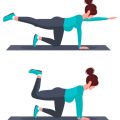Introduction to Common Postural Mistakes
Maintaining good posture is more than just standing up straight; it plays a vital role in supporting daily health and overall well-being. In the UK, where many people spend long hours at desks or commuting, postural habits can significantly impact musculoskeletal health. Poor posture is linked to a range of issues including back and neck pain, headaches, fatigue, and even reduced concentration levels. Despite its importance, common postural mistakes are frequently observed in everyday British life—slouching at the desk, craning the neck while using mobile devices, or leaning forward while sitting on the sofa. Addressing these mistakes is crucial for preventing chronic discomfort and promoting better long-term health outcomes. This article explores the most prevalent postural errors seen across the UK and offers practical advice for correcting them at home.
2. Slouching When Sitting: Causes and Solutions
Sitting for long periods, whether at a desk or on the sofa, is common in daily life across the UK. Unfortunately, slouching is a frequent postural mistake that can lead to muscle fatigue, back pain, and even reduced concentration. The impact of poor sitting posture over time includes an increased risk of musculoskeletal disorders, as well as decreased productivity and wellbeing.
How Slouching Affects Your Health
Slouching compresses the spine and places extra pressure on the lower back. It also restricts lung capacity and can impair circulation. Research by the NHS highlights that prolonged slouching may contribute to chronic back pain and tension headaches, making it vital to address this issue early.
Common Causes of Slouching
| Cause | Description |
|---|---|
| Poor Chair Support | Lack of lumbar support encourages rounding of the back. |
| Incorrect Desk Height | Leads to leaning forward or hunching shoulders. |
| Long Sitting Periods | Fatigue causes gradual loss of upright posture. |
Actionable Home-Based Techniques
- Set Up Your Chair: Choose a chair with good lumbar support or use a rolled-up towel to support your lower back. Adjust the seat height so your feet are flat on the floor and your knees are level with your hips.
- Desk Arrangement: Ensure your monitor is at eye level and about an arm’s length away. Keep your keyboard and mouse close enough so you don’t have to stretch forward.
- Movement Reminders: Use phone alarms or sticky notes as reminders to check your posture every 30 minutes and take short movement breaks. The NHS recommends standing up, stretching, or walking briefly every hour.
Quick Reference Table: Sitting Posture Checklist
| Checklist Item | Status (Yes/No) |
|---|---|
| Feet flat on floor | |
| Knees level with hips | |
| Back supported by chair/towel | |
| Straight back, relaxed shoulders | |
| Monitor at eye level |
The Bottom Line
Tackling slouching at home is practical and beneficial. By optimising your seating arrangement and building regular posture checks into your routine, you can significantly reduce discomfort and improve your overall health—no costly equipment required.

3. Forward Head Posture: Everyday Triggers and Home Fixes
Forward head posture is becoming increasingly common in the UK, largely due to our modern lifestyles. Spending long hours on computers, tablets, or mobile phones—whether at work or during leisure time—encourages us to lean our heads forward, placing unnecessary strain on the neck and upper back muscles. This poor alignment can lead to discomfort, headaches, and even more persistent musculoskeletal issues if left unaddressed.
Main Contributors in Everyday Life
For many Britons, remote working setups and prolonged screen use are key contributors. Slouching over laptops at makeshift desks or scrolling through smartphones on the commute are habits that exacerbate forward head posture. Even reading or watching telly in bed with insufficient support can reinforce this misalignment.
Simple Home Exercises to Improve Posture
Fortunately, a few straightforward exercises can help correct forward head posture from the comfort of your home:
Chin Tucks
Sit or stand upright with shoulders relaxed. Gently tuck your chin straight back (as if making a double chin), hold for five seconds, then release. Repeat 10 times, several times daily.
Wall Angels
Stand with your back against a wall, feet a few inches away from it. Press your lower back, upper back, and head gently against the wall. Raise your arms to shoulder height and slide them up and down like making a snow angel, ensuring your head stays in contact with the wall throughout.
Neck Stretches
Sit tall and tilt your right ear towards your right shoulder until you feel a gentle stretch on the left side of your neck. Hold for 15-20 seconds and repeat on the other side.
Integrate Mindful Habits
Alongside exercises, make small changes such as adjusting screen heights to eye level, taking regular breaks from devices, and setting reminders to check your posture throughout the day. These proactive steps can significantly reduce forward head posture and contribute to better overall spinal health.
4. Rounded Shoulders and How to Counteract Them
Rounded shoulders are a common postural mistake, especially among those who spend long hours at a desk or using electronic devices—a situation many in the UK will recognise given the prevalence of remote work and extended commuting. This posture is characterised by the shoulders slumping forward, which can lead to upper back discomfort and affect overall spinal alignment.
Common Habits Leading to Rounded Shoulders
| Habit | Description | British Context Example |
|---|---|---|
| Prolonged Sitting | Sitting for extended periods without support or movement encourages shoulder slouching. | Working from home at a kitchen table or sofa instead of a supportive desk chair. |
| Poor Desk Ergonomics | Improper monitor height or keyboard placement causes shoulders to roll forward. | Laptop use on laps during train commutes or on coffee tables in small flats. |
| Frequent Phone Use | Leaning forward and hunching over mobile devices increases shoulder rounding. | Checking social media or emails on the Tube or while waiting for buses. |
Strengthening and Mobility Routines for Home
Addressing rounded shoulders requires targeted strengthening and mobility exercises that can be easily performed at home, even in smaller British living spaces. These routines do not require specialised equipment—common household items like resistance bands, cushions, or towels suffice.
Recommended Exercises
| Exercise | Description | Home Adaptation Tips |
|---|---|---|
| Pectoral Stretch | Stand in a doorway, placing forearms on the frame and gently leaning forward to stretch the chest muscles. | Use any sturdy doorway; ideal after long periods at your desk or kitchen table. |
| Scapular Retractions | Sit upright and squeeze shoulder blades together, holding for 5 seconds before releasing. | This can be done seated on your sofa, dining chair, or even at your work desk. |
| Wall Angels | Stand with back against a wall, arms bent at 90 degrees, slide arms up and down while keeping contact with the wall. | Narrow hallways or behind doors work well for this move in smaller homes or flats. |
| Banded Pull-Aparts | Hold a resistance band at shoulder height and pull it apart, focusing on squeezing shoulder blades together. | A scarf or exercise band can substitute if you lack traditional equipment. |
Lifestyle Adjustments for Sustainable Improvement
Cultivating awareness of posture throughout daily activities is key. Set reminders to check your posture every hour, particularly when working from home. Consider rearranging your workspace—raising your laptop with books or investing in an ergonomic chair if space allows. Consistent practice of these exercises and adjustments will help counteract rounded shoulders and foster healthier habits suitable for life in Britain’s diverse home environments.
5. Poor Standing Posture: Recognising and Adjusting
Poor standing posture is a common issue among people in the UK, especially with the prevalence of sedentary lifestyles and long commutes. Many individuals develop habits such as slouching, locking their knees, or shifting weight unevenly when standing for extended periods. These mistakes can lead to discomfort, back pain, and even long-term musculoskeletal problems if left unaddressed.
Common Mistakes in Upright Posture
The most frequent postural errors include rounded shoulders, forward head position, and an arched lower back (often called ‘sway back’). Another common mistake is standing with the hips pushed forwards or resting weight predominantly on one leg, which can strain both the lower back and hips over time. These issues are often exacerbated by wearing unsupportive footwear or standing on hard surfaces for too long.
Effective At-Home Strategies
To improve your standing posture at home, start by practising mindful alignment. Stand with your feet hip-width apart, distribute your weight evenly across both feet, and gently engage your core muscles. Imagine a straight line running from your ears through your shoulders, hips, knees, and down to your ankles. Keep your shoulders relaxed and avoid tensing your neck.
Simple Home-Based Corrections
Try setting hourly reminders to check your posture while doing household tasks or working from home. Incorporate short exercises like calf raises or gentle squats to encourage blood flow and activate stabilising muscles. If possible, use a mirror to observe your alignment and make real-time adjustments. Over time, these small but consistent actions help build better postural habits that can significantly reduce discomfort and promote long-term spinal health.
6. Integrating Postural Awareness into Daily Routine
Building good posture habits requires more than just correcting your stance during exercise or at your desk—it’s about weaving postural mindfulness into the fabric of your everyday UK lifestyle. Here are practical strategies to make this a sustainable part of your routine.
Set Regular Reminders
Take advantage of smartphone alarms or wearable fitness trackers to prompt you every 30-60 minutes to check in with your posture. Whether working from home, commuting on the Tube, or watching telly, gentle reminders help reinforce new habits until they become second nature.
Incorporate Simple Posture Checks
Link postural checks to daily activities you already do—such as waiting for the kettle to boil, queuing in shops, or brushing your teeth. Stand tall, roll your shoulders back, and align your head over your spine each time. Over time, these micro-adjustments add up to noticeable improvements.
Use Accessible Technology
There is an increasing range of affordable apps and devices designed for UK users to support better posture. Some apps provide real-time feedback and educational resources, while basic tools like posture-correcting straps can be worn under clothes for subtle support during long workdays or school runs.
Create Ergonomic Home Set-Ups
If you’re working remotely, adjust your workspace with what you have at hand. Use cushions for lumbar support or stack books to raise your screen to eye level. These simple tweaks can dramatically reduce slouching and neck strain over time.
Stay Active Throughout the Day
Avoid long periods of sitting still by incorporating movement breaks—walk around during phone calls, perform gentle stretches between tasks, or use standing desks if available. Even a short stroll around the block or garden can reset muscle tension and improve awareness.
By making small but consistent changes that fit naturally into British daily life, it becomes much easier to maintain good posture at home. Consistent self-checks, tech assistance, and mindful routines will support a healthier spine and overall wellbeing in the long term.


